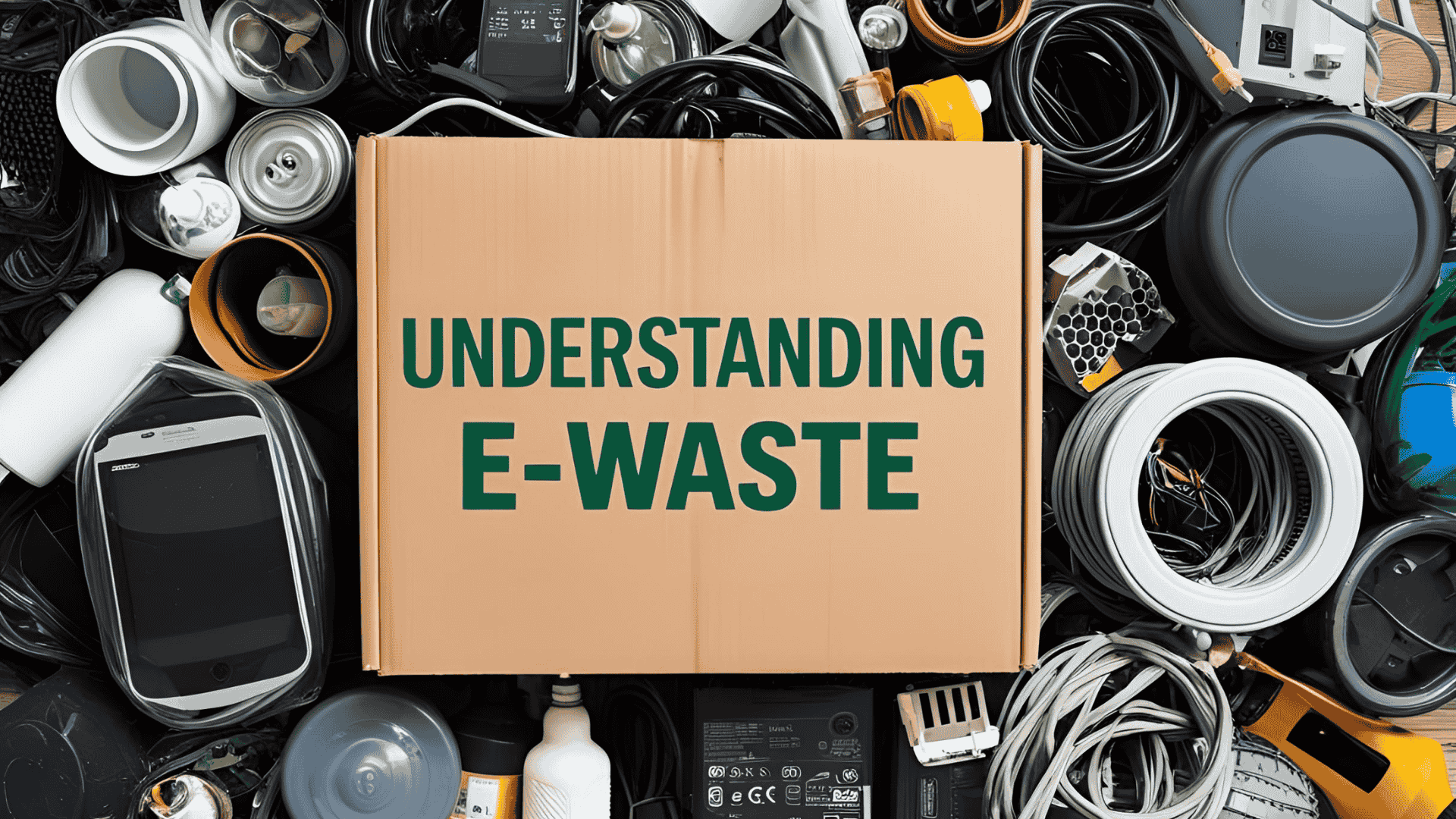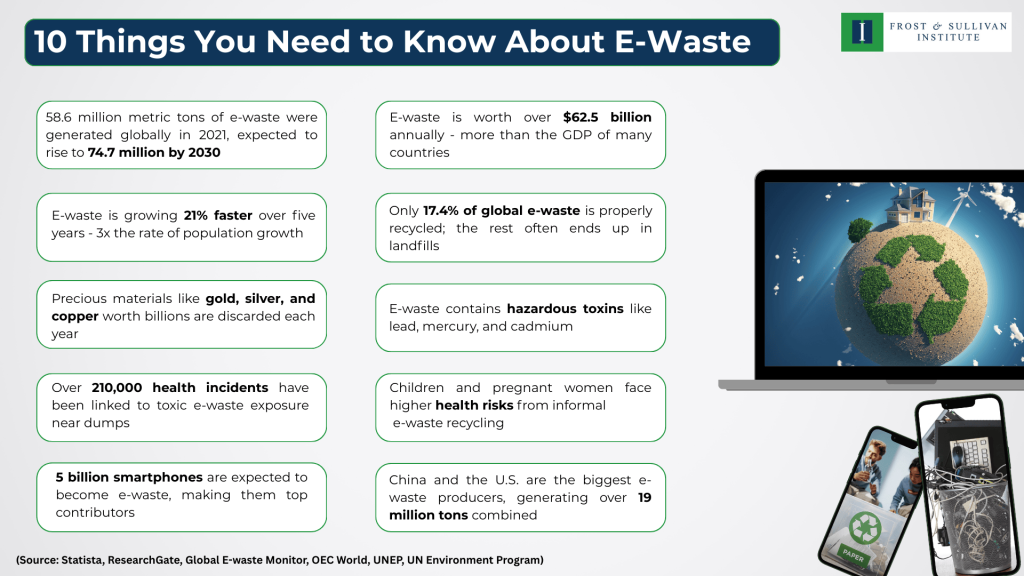
03 Apr Understanding E-Waste: Why Is It a Growing Global Concern and How Do We Reduce It?
In today’s digital age, electronic devices are an essential part of our daily lives. From smartphones to laptops, televisions, and even household appliances, technology has been seamlessly integrated into nearly every aspect of our routines. However, this rise in electronic consumption has led to a new environmental challenge: electronic waste, or e-waste.
E-waste refers to discarded electrical or electronic devices, including a wide variety of items like old computers, smartphones, TVs, batteries, household appliances (fridges, microwaves), and more. As technology advances rapidly, devices become obsolete quicker, and we often find ourselves replacing gadgets that are still functional but no longer meet our needs or expectations. This contributes to the growing piles of e-waste, most of which end up in landfills or are improperly disposed of.

Why Is E-Waste a Problem?
E-waste generation is estimated to reach a staggering 82 million metric tons in 2030. Managing E-waste has become essential due to its environmental impact, health risks, and resource wastage. According to Statista, Electronic waste generation worldwide stood at around 62 million metric tons in 2022. Only 17.4% of global e-waste is properly recycled. This means that over 80% of e-waste is not being handled correctly, often ending up in landfills or informal recycling operations where dangerous chemicals and metals are released into the environment.
This growing problem poses a major environmental and human health risk. E-waste contains hazardous substances like lead, mercury, and cadmium, all of which can leach into the soil and water when improperly disposed of. There were 210,000 incidents of health issues and toxicity from people living near dumps whose only income is extracting valuable e-waste by hand.
As technology rapidly evolves, many electronic devices are designed with short lifespans and are not built with recycling in mind. This not only accelerates the growth of e-waste but also results in valuable resources being wasted. Many electronic products contain precious metals like gold, silver, and copper, as well as rare earth elements that are often not recovered in traditional disposal methods. The estimated e-waste produced annually is worth over $62.5 billion, which is more than the GDP of most countries.
How Can We Reduce E-Waste?
Given the growing volume of e-waste, it is essential for us to take proactive steps to reduce its impact. First and foremost, proper recycling is key. Approximately $62.5 billion worth of valuable materials, such as gold, silver, and copper, are discarded each year through e-waste, despite being recyclable. The recycling of e-waste helps recover valuable materials like metals and rare earth elements, which can be reused in the production of new electronics. Proper e-waste recycling also ensures that hazardous chemicals like lead and mercury are safely processed and kept out of the environment.
Another way is by reusing and prolonging the life of electronic devices. Every year, manufacturing electronics consumes enormous amounts of energy and raw materials. By remission and reusing these materials, we can significantly reduce energy use, lower greenhouse gas emissions, and ease the burden on natural resources. In 2022, it was estimated that around 16 billion phones were owned worldwide, with over 5 billion of those expected to become e-waste, making smartphones the largest contributor to e-waste.
Conclusion
As technology continues to evolve, the problem of e-waste will only grow more urgent. With millions of tons of e-waste generated annually and millions of dollars in precious materials lost, we cannot afford to ignore this growing environmental and health crisis. Addressing e-waste through proper recycling, sustainable design, and public education is crucial to conserving resources, protecting human health, and building a more sustainable future for generations to come.
Blog by Shreya Ghimire,
Research Analyst, Frost & Sullivan Institute
